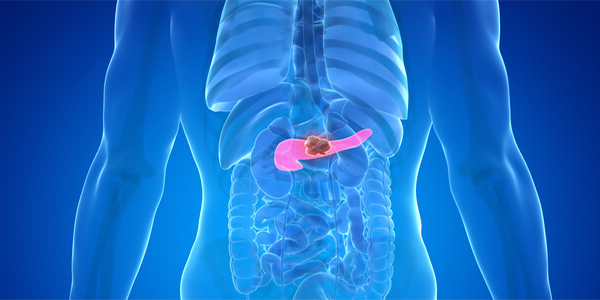The five-year survival rate of pancreatic cancer in Korea remained surprisingly low at 15.2 percent, compared to the overall survival rate of all cancer was 71.5 percent, according to the government’s latest statistics.

What are the reasons for such poor pancreatic cancer treatment outcomes?
Professor Jo Jung-hyun of endocrinology at Severance Hospital picked three reasons while speaking in a YouTube channel run by the hospital.
1. Rare early detection
The first reason is that pancreatic cancer is rarely detected early, compared to other types of cancer. Pancreatic cancer is usually asymptomatic. Symptoms do not appear until about 80 percent of the pancreas is damaged, and the symptoms are similar to indigestion or gastritis, making it difficult for patients to feel abnormal. Unlike gastric cancer, colorectal cancer, lung cancer, cervical cancer, liver cancer, etc., there is currently no cost-effective cancer diagnostic test for pancreatic cancer.
“More than half of the pancreatic cancer patients see a doctor when the disease is metastasized distantly or it is inoperable because it invaded nearby blood vessels or organs,” Jo said.
“Only about 20 percent of patients can receive surgery when they are first diagnosed, and this is why the pancreatic cancer shows such a low survival rate.”
2. Prone to micrometastasis
The second reason is that pancreatic cancer is prone to micrometastasis. Cancers that are prone to micrometastasis have a high cancer recurrence rate.
According to Jo, even if about 20 percent of pancreatic cancer patients are operable, they often experience relapses.
“Nearly 50 percent of those who underwent surgery have a recurrence within two years, which is a major reason for low pancreatic cancer survival rates,” he said.
3. Poor response to chemotherapy
The third reason is that pancreatic cancer does not respond to anticancer agents well. Chemotherapy is often performed before or after surgery to lower the recurrence risk but the survival rate is inevitably low because the response to chemotherapy is poor.
Jo explained that pancreatic cancer has a very high rate of resistance to chemotherapy and a tumor microenvironment around the pancreas is very hard and thick, compared to other cancers.
“That’s why it is hard for chemotherapy to penetrate the tumor. Consequently, the cancer progresses and leads to a higher mortality rate,” he said.
How to raise survival?
The only way for pancreatic cancer patients to survive for a long time is to detect the disease early. According to data by Asan Medical Center between 2000 and 2014, the five-year survival rate of stage-1 patients who found the tumor early and the size was smaller than 2cm was 50 percent. The rate is significantly higher than 14 percent among stage-3 pancreatic patients who received surgery.
For early detection of pancreatic cancer, a dynamic contrast agent CT scan, not a general CT scan, is required to detect cancer as small as 1cm.
For now, it is best for the high-risk group to spend their own money to get a regular dynamic contrast agent CT scan or abdominal ultrasound during a regular health checkup.
The high-risk group for pancreatic cancer includes those who have chronic pancreatitis or have a lump in the pancreas, a family history of pancreatic cancer, and those who smoked or drank a lot for a long time.

